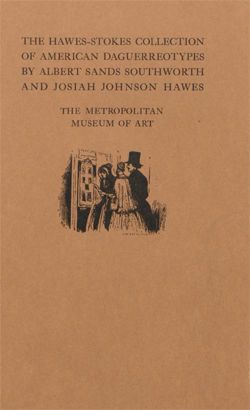[Unidentified Woman in Nine Oval Views]
Photography Studio Southworth and Hawes American
Albert Sands Southworth American
Josiah Johnson Hawes American
Not on view
This first photographic process invented by Louis Daguerre (1787-1851) spread rapidly around the world after its presentation to the public in Paris in 1839. Exposed in a camera obscura and developed in mercury vapors, each highly polished silvered copper plate is a unique photograph that, viewed in proper light, exhibits extraordinary detail and three-dimensionality.
The Boston partnership of Southworth and Hawes produced the finest portrait daguerreotypes in America for a clientele that included leading political, intellectual, and artistic figures. This "medallion" portrait of an unidentified woman is a rare example of a difficult technique in which a sliding plateholder patented by Southworth was used to take eight sequential exposures on the same plate. The cyclical arrangement of the sitter's face suggests the phases of the moon from "new" to "full," an effect accentuated by the carefully bisected black and white background.
Due to rights restrictions, this image cannot be enlarged, viewed at full screen, or downloaded.
![[Unidentified Woman in Nine Oval Views], Southworth and Hawes (American, active 1843–1863), Daguerreotype](https://images.metmuseum.org/CRDImages/ph/web-additional/39.22.4.jpg)

